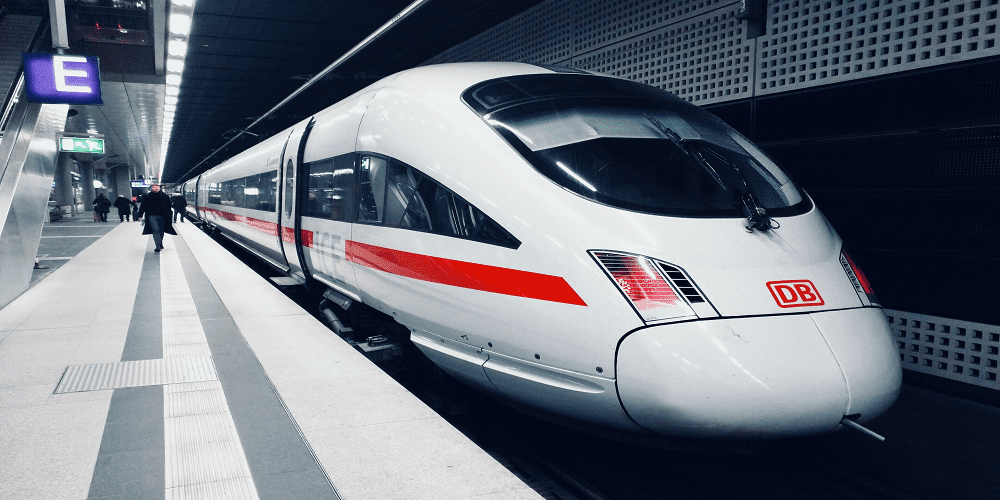Imagine a world where trains glide effortlessly through the city, navigating busy streets and crowded intersections with precision. A world where you can sit back, relax, and trust that your journey will be safe and efficient Well, dear readers, this seemingly futuristic vision is no longer confined to the pages of science fiction novels; it is becoming our reality. Driverless trains are rapidly revolutionizing public transportation systems around the globe, propelling us into an era of convenient travel like never before.
Introduction to Driverless Trains and Autonomous Vehicles
The rise of driverless trains and autonomous vehicles has been a boon for public transportation. With these new technologies, transit authorities have been able to increase efficiency and safety while reducing costs.
Driverless trains have been in operation for some time now, with the first implementation dating back to the 1980s. In the early days, these systems were rudimentary and required significant human oversight. However, with advances in artificial intelligence and machine learning, driverless trains have become increasingly sophisticated and are now capable of operating without any human intervention whatsoever.
Autonomous vehicles are a relative newcomer to the scene, but they are already making waves in the transit industry. These vehicles offer a number of advantages over traditional buses or trains, including the ability to dynamically route themselves based on real-time traffic conditions. Additionally, autonomous vehicles can be summoned on demand, meaning that transit authorities can provide door-to-door service without the need for expensive infrastructure like bus stops or train stations.
As public transportation continues to evolve, it’s likely that driverless trains and autonomous vehicles will play an ever-increasing role. These technologies have the potential to revolutionize public transportation by making it more efficient, safe, and affordable than ever before.
Benefits of driverless trains
Public transportation is undergoing a major revolution, and driverless trains are at the forefront. Here are some of the benefits of this new technology:
1. Increased safety: One of the main benefits of driverless trains is increased safety. With no human driver, there is no risk of human error or fatigue, which can lead to accidents.
2. Reduced costs: Driverless trains can also help reduce operating costs for public transportation systems. Without the need to pay drivers, these systems can save money that can be reinvested in other areas or used to keep fares low.
3. Increased capacity: Another benefit of driverless trains is that they can increase capacity on existing public transportation infrastructure. By eliminating the need for drivers, more trains can be run on existing tracks and lines, increasing efficiency and reducing congestion.
4. Improved service: Driverless trains can also provide a higher level of service than traditional public transportation options. With their increased capacity and safety, these trains can offer a more reliable and comfortable experience for passengers.
How Driverless Trains are Being Used Around the World
Public transportation is in the midst of a revolution. Driverless trains are being implemented in cities all around the world, and they’re changing the way we get around.
Driverless trains offer a number of advantages over traditional train systems. They’re more efficient, for one thing. They can also run more frequently and with shorter headways, meaning that there’s less wait time for passengers. And because they don’t require a human driver, they can operate 24 hours a day.
There are already driverless train systems in operation in a number of cities, including London, Paris, and Tokyo. And many more cities are planning to implement driverless trains in the near future.
The benefits of driverless trains are clear. But there are still some challenges to be addressed before they can become widespread. One of the biggest challenges is safety. There have been a few accidents involving driverless trains, and there’s still some public apprehension about them. But as technology continues to improve, these concerns are likely to dissipate.
Another challenge is infrastructure. Driverless trains require new infrastructure, such as sensors and communication systems, which can be expensive to install. But as more and more cities adopt driverless train technology, the costs will come down, and this will become less of a barrier to adoption.
Driverless trains are already starting to transform public transportation. And as technology continues to develop, we can expect even more changes in the years to come.
Challenges Faced in Implementing Driverless Trains
Public transportation is in the midst of a revolution. Driverless trains are being developed and tested by companies around the world, with the promise of increased efficiency and safety. But there are challenges to implementing this new technology.
Cost is a major factor. Driverless trains are more expensive to develop and maintain than traditional trains. There is also the question of public acceptance. Will people feel safe riding on a train without a driver?
There are also technical challenges to be addressed. Driverless trains must be able to operate in all weather conditions and communicate with other trains and traffic control systems. Another challenge is dealing with emergencies. What if there is a power outage or another incident that requires a human driver?
These are just some of the challenges faced by those working to develop and implement driverless trains. It will be an exciting journey to see how these challenges are addressed in the coming years.
What the Future Holds for Driverless Trains
The future of driverless trains is looking very bright. Not only are they more efficient and cost-effective than traditional trains, but they also have the potential to revolutionize public transportation. Here are some of the ways that driverless trains will change the way we travel:
1. Increased safety: One of the biggest benefits of driverless trains is that they are much safer than traditional trains. With no human operator, there is no risk of human error or fatigue, which can lead to accidents.
2. More reliable: Driverless trains are also more reliable than traditional trains. Because they are automated, they are less likely to experience delays or cancellations due to mechanical issues or bad weather.
3. Cheaper: Another big benefit of driverless trains is that they are cheaper to operate than traditional trains. This is because they require less maintenance and staffing, so operating costs are lower.
4. More efficient: Driverless trains are also more efficient than traditional trains. They can travel closer together, which reduces congestion, and their automated operation means that they can make better use of infrastructure such as tracks and signals.
5. Greater capacity: Driverless trains have the potential to carry more passengers than traditional trains because they can be made longer and wider. This means that they can help alleviate overcrowding on existing train services.
Conclusion
Driverless trains are a remarkable example of science fiction turning into reality. They have the potential to revolutionize how people travel, providing more efficient and safer transportation options for everyone. With driverless technology continuing to develop at an incredible rate, it is exciting to think about what the future holds in terms of public transportation. We can only imagine that these advancements will bring us closer together with greater ease than ever before.



































